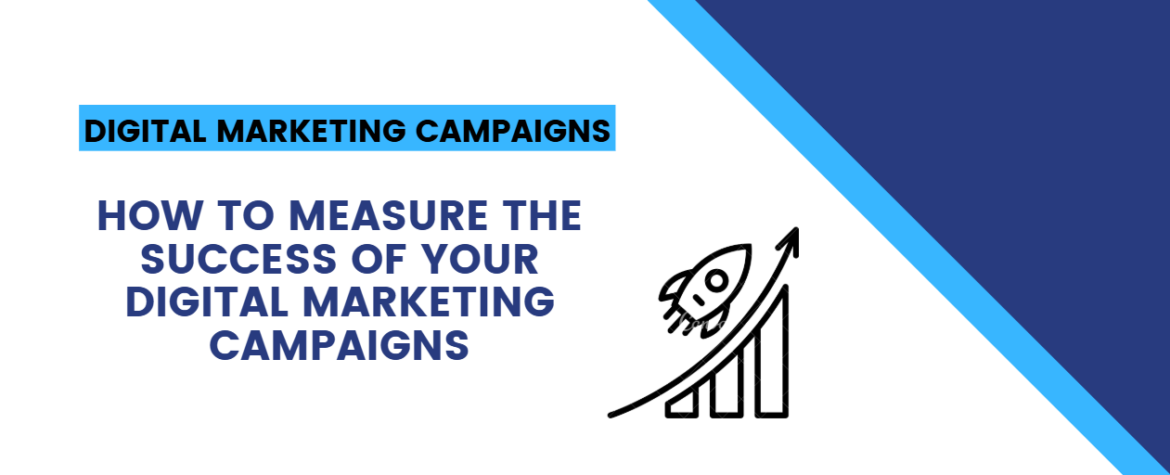Digital marketing campaigns can be incredibly effective at driving traffic, generating leads, and increasing sales. But how do you know if your efforts are really paying off? Without clear measurement and analysis, it’s hard to tell what’s working and what isn’t. Fortunately, there are several ways to track and measure the success of your digital marketing campaigns.
In this blog post, we’ll break down how to measure your digital marketing success with simple and actionable tips, along with key metrics and tools to help you understand your campaign’s performance.
1. Set Clear Goals and KPIs (Key Performance Indicators)
Before you can measure success, you need to define it. What does success look like for your campaign? Are you trying to increase website traffic? Generate more leads? Boost sales?

Once you have your goals in place, break them down into Key Performance Indicators (KPIs). KPIs are measurable values that show whether you’re on track to meet your objectives. Common KPIs in digital marketing include:
- Website Traffic: How many visitors are coming to your website?
- Conversion Rate: How many visitors are taking the desired action (buying, signing up, etc.)?
- Lead Generation: How many new leads are being captured?
- Customer Acquisition Cost (CAC): How much are you spending to acquire a new customer?
Stat Alert:
72% of companies that set clear KPIs report having better marketing results, according to Smart Circle.
Pro Tip: Align your KPIs with the specific stage of the customer journey you’re targeting—whether it’s awareness, consideration, or conversion.
2. Track Website Traffic and User Behavior
One of the most common ways to measure digital marketing success is by tracking website traffic. Tools like Google Analytics allow you to see how many people are visiting your website, where they’re coming from, and what pages they’re viewing.

Look at these key metrics:
- Organic Traffic: Traffic that comes from search engines like Google. This tells you how well your SEO efforts are working.
- Referral Traffic: Traffic that comes from external sites (e.g., social media, blogs, or affiliate sites).
- Bounce Rate: The percentage of visitors who leave your site after viewing only one page. A high bounce rate might indicate that your landing page isn’t engaging enough or doesn’t match user expectations.
- Session Duration: How long visitors stay on your site. The longer they stay, the more likely they are to convert.
Stat Alert:
61% of marketers say improving SEO and growing their organic presence is their top priority, according to a 2019 HubSpot survey.
Pro Tip: Focus on improving time on site and page views per session—both indicators of strong engagement.
3. Monitor Conversion Rates and Sales
At the end of the day, the success of most digital marketing campaigns comes down to conversions—whether that’s completing a purchase, filling out a lead form, or signing up for a newsletter. Conversion rate is a critical metric to track.

To calculate conversion rate:
Conversion Rate=(Number of ConversionsTotal Visitors)×100text{Conversion Rate} = left( frac{text{Number of Conversions}}{text{Total Visitors}} right) times 100
If you’re running paid ads, like Google Ads or Facebook Ads, you can also track:
- Cost Per Click (CPC)
- Cost Per Acquisition (CPA)
- Return on Ad Spend (ROAS)
These metrics will help you understand how much you’re paying to drive traffic and whether that traffic is converting into paying customers.
Stat Alert:
Conversion rates for paid search ads are 50% higher than for organic search, according to WordStream.
Pro Tip: If your conversion rate is low, consider testing different landing page designs, improving your call-to-action (CTA), or offering an incentive (like a discount or free trial).
4. Track Engagement on Social Media
If your digital marketing campaign includes social media, engagement metrics are key to understanding how well your content is resonating with your audience. Common social media engagement metrics include:

- Likes, Shares, Comments: These show how much people are interacting with your posts.
- Click-Through Rate (CTR): This shows how many people clicked on the links you shared on social media.
- Follower Growth: A steady increase in followers suggests that your content is attracting more people.
Tools like Facebook Insights, Instagram Analytics, and Twitter Analytics provide detailed metrics on engagement, allowing you to see which posts perform best and what times of day get the most interactions.
Stat Alert:
Social media ads that include a call-to-action (CTA) see 285% higher click-through rates than those without, according to HubSpot.
Pro Tip: Track engagement trends over time to understand which types of content (videos, polls, infographics) drive the most interaction.
5. Measure ROI (Return on Investment)
The ultimate test of any marketing campaign is whether it’s making your business money. Measuring ROI is essential for determining the effectiveness of your efforts. The basic formula to calculate ROI is:

ROI=(Revenue from Campaign−Cost of CampaignCost of Campaign)×100text{ROI} = left( frac{text{Revenue from Campaign} – text{Cost of Campaign}}{text{Cost of Campaign}} right) times 100
For example, if you spent $500 on a Facebook ad campaign and made $2,000 in sales, your ROI would be:
ROI=(2000−500500)×100=300%text{ROI} = left( frac{2000 – 500}{500} right) times 100 = 300%
Stat Alert:
61% of marketers say proving ROI is their top challenge when it comes to digital marketing, according to Smart Circle.
Pro Tip: To get a clear picture of ROI, track both direct and indirect revenue. Even if a campaign doesn’t immediately lead to sales, it may be building brand awareness or generating leads that turn into customers later.
6. Use A/B Testing for Continuous Improvement
One of the best ways to measure and improve the success of your digital marketing campaigns is by using A/B testing. A/B testing involves creating two versions of a webpage, email, or ad to see which one performs better. You can test:

- Headlines or copy
- CTAs (Call-to-Action)
- Visuals or design
- Email subject lines
By continuously testing different elements of your campaign, you can optimize performance over time.
Stat Alert:
A/B testing can increase conversion rates by up to 49% when done effectively, according to VWO.
Pro Tip: Keep testing and tweaking your campaigns even after they’ve launched. The digital marketing landscape is always changing, and small adjustments can lead to big improvements in performance.
7. Monitor Customer Feedback
Sometimes, the best way to measure success isn’t through data, but through customer feedback. Pay attention to:

- Surveys: Ask customers what they think of your campaign or product.
- Reviews and Testimonials: What are people saying online about your brand?
- Customer Support Inquiries: Are there common questions or complaints related to your campaign?
By listening to your customers, you can gain valuable insights into what’s working and where you can improve.
Stat Alert:
92% of consumers read reviews and trust them as much as personal recommendations, according to BrightLocal.
Conclusion
Measuring the success of your digital marketing campaigns is crucial for understanding what works, what doesn’t, and where you should allocate your resources for the best results. By tracking the right metrics—such as website traffic, conversion rates, social media engagement, and ROI—you can gain valuable insights and continuously improve your strategies.
Remember, digital marketing is an ongoing process of testing, learning, and adapting. So, keep track of your KPIs, analyze your results regularly, and refine your campaigns to drive even better outcomes in the future.


